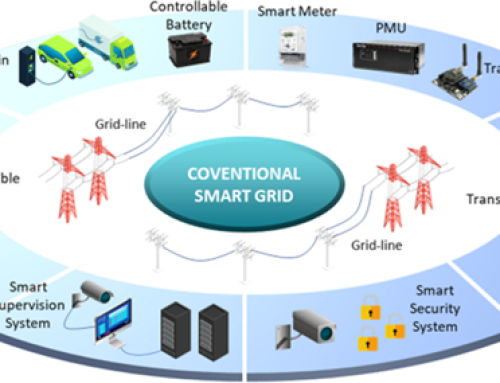Are your energy operations still running on disconnected systems?
You work hard to manage rising costs, unpredictable supply, and strict regulations. But what if the tools you’re using are holding you back? For most energy companies, outdated systems create blind spots. You can’t track real-time demand, control expenses, or make confident planning decisions.
The energy market is evolving faster than ever. Smart grids, renewable sources, and load balancing require unified data. You need real-time visibility across assets, billing, forecasts, and service operations. That’s where Dynamics 365 for Energy Cost Management makes the difference.
E-365.ai helps you connect your EMS, ERP, ADMS, and work orders through one platform: Microsoft Dynamics 365. Backed by AI, this solution simplifies planning, streamlines billing, and improves forecasting accuracy across your entire grid.
Let’s look at how energy companies in the US can modernize through Microsoft’s stack—especially with the pressure of new energy policies and clean energy targets.
Why Energy Enterprises Need More Than Traditional ERP Tools
Most legacy tools are not designed for the volume and variety of data in today’s grid. You can’t analyze real-time demand patterns or connect operational systems for generation, load, and maintenance.
With Dynamics 365 for Energy Cost Management, you can track asset-level costs, generation-to-delivery expenses, and service-related billing. This platform brings accounting, procurement, and field data together. It improves budget control, especially for utilities managing large infrastructure portfolios.
It’s not just about tracking costs. You also get forecasting tools and historical consumption data. This enables planning decisions based on usage trends and infrastructure capacity. You can reduce over-procurement, project outages accurately, and align budgets with actual energy delivery models.
Smarter Forecasting with Microsoft Dynamics for Energy Market Forecasting
Grid operators and utilities deal with unpredictable markets. Load balancing, energy pricing, and fuel mix all shift with demand. Traditional forecasting models rely on siloed data and static reports.
Microsoft Dynamics for Energy Market Forecasting enables AI-powered modeling with continuous updates. You get access to scenario-based demand forecasts and pricing simulations based on historical load data, weather impacts, and generation mix.
This tool integrates with EMS and ADMS systems for real-time updates. Decision-makers can simulate tariffs, supply mixes, and peak hour pricing to plan power purchases with better margins. It helps protect you against volatility while staying compliant with regulatory requirements.
Applying Microsoft Dynamics for Renewable Energy Analytics
As the US energy grid transitions to solar, wind, and hydro sources, utilities need accurate performance tracking. You can’t afford to miss generation targets or delay maintenance.
Microsoft Dynamics for Renewable Energy Analytics connects generation units with financial, operational, and service systems. Through automated dashboards, you can monitor generation efficiency, equipment downtimes, and cost per kWh.
You also gain insights from weather patterns and predictive maintenance alerts. This reduces downtime and extends the life of your assets. With consistent reporting, you can meet renewable mandates and file cleaner ESG reports without manual reporting.
Financial Control and Operational Efficiency: A Comparison
One of the biggest advantages of Dynamics 365 for Energy Cost Management is how it links financial operations with real-time utility data. Here’s a simple comparison of traditional systems versus Microsoft Dynamics 365 for the energy sector:
| Feature | Traditional Energy ERP | Dynamics 365 for Energy Cost Management |
| Real-time Load Cost Tracking | Delayed, often manual | Live tracking integrated with EMS |
| Project Budget Allocation | Monthly or quarterly | Automated based on field data |
| Renewable Energy Reporting | Manual, Excel-driven | AI-enabled dashboards |
| Forecasting Demand/Generation | Historical trend only | AI and machine learning-based projections |
| Regulatory Reporting | Manual, paper-based | Automated with audit trails |
| Integration with ADMS and EMS | Minimal or missing | Full integration available |
By adopting this unified approach, you can move from reactive to predictive operations.
Planning Future Energy Needs with Confidence
Using Dynamics 365 for Energy Cost Management, your planners can tie budgets, consumption, service tickets, and project timelines together. This matters when managing capital-intensive upgrades like substations, transformers, or distributed energy sources.
For US-based utilities preparing for electrification trends, grid resilience upgrades, and federal energy goals, connected systems are no longer optional. Microsoft Azure is projected to reach $200 billion in revenue by 2028. That shows how fast cloud-based energy systems are growing.
Final Thoughts
E-365.ai is a Microsoft Dynamics 365 partner for the electric utility industry. We help you bring data from generation, billing, and service operations into one platform. Our energy planning module integrates with your existing EMS and ADMS.
With Dynamics 365 for Energy Cost Management, you stop wasting time switching between systems. Instead, you get real-time data to cut costs, reduce outages, and support renewable growth.
Ready to see how Dynamics 365 for Energy Cost Management works in your utility? Connect with E-365.ai today.






Leave A Comment